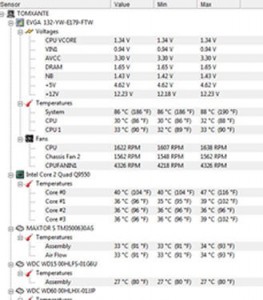PROBLEM: I have a startup problem in Windows 7 64-bit version. The PC runs an Intel Q9550 Socket LGA775 dual-core processor on an EVGA 790i motherboard, overclocked to to 3.6GHz, 8GB RAM memory, not overclocked, an EVGA 570 Classified graphics card, water cooling, a 1000W power supply. The startup hangs at the Starting Windows screen. If I wait for about two minutes and restart, Windows loads normally and if I have to restart during the day, the reboot goes through successfully. The problem only occurs during the initial startup in the morning. Here is all the unsuccessful troubleshooting I’ve done so far: reflashed the BIOS – a repair installation – disconnected all of my USB devices – ran chkdsk /r from the Command Prompt [enter command prompt in the Search box and right-click on the link provided and choose Run as Administrator] – ran the memory diagnostic memtest – started up with “clean boot” checked in msconfig [enter System Configuration in the Search box and click the link] – The computer also can’t be started up in Safe Mode [by pressing the F8 key repeatedly before the Starting Windows screen appears] after being shut down overnight. I set the processor back to its standard clock speed.
ANSWER: Suspecting a power-supply problem, I asked this fellow to download and run HWMonitor, which returns system temperatures, voltages, etc. He sent me the following image:

Under voltages, the +5V is reported as being under 5V at 4.62V and under Temperatures the System has a temperature of 86 degrees C, which is almost certainly a reporting error, because there is no way of the system getting that hot. Anyhow, it turned out that the power supply was malfunctioning at startup, but was fine after the system was up and running.
A power supply can be tested manually or with a multimeter as instructed in the following article:
http://pcsupport.about.com/od/toolsofthetrade/f/powersupplytest.htm
If you don’t want to mess around with this potentially very dangerous component, if you don’t have a spare or another computer from which you can remove one, you can borrow a working power supply from a friend or relative that has enough power to power your system (it must not be underpowered) and install it having removed the suspect unit. If it works properly, then you either have to replace your power supply or get it repaired. The most cost-effective solution with a power supply is usually to buy a new one.